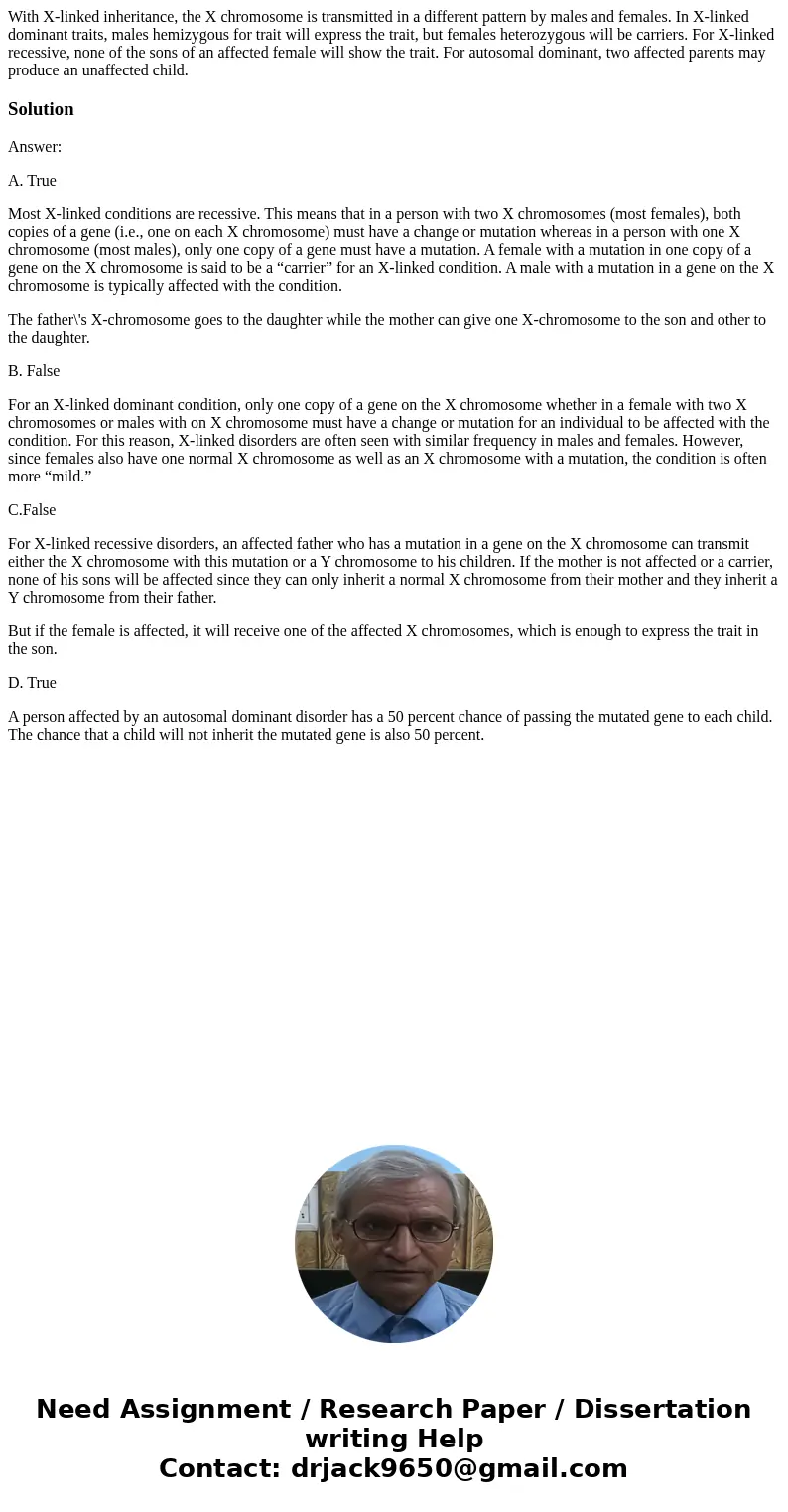With Xlinked inheritance the X chromosome is transmitted in
Solution
Answer:
A. True
Most X-linked conditions are recessive. This means that in a person with two X chromosomes (most females), both copies of a gene (i.e., one on each X chromosome) must have a change or mutation whereas in a person with one X chromosome (most males), only one copy of a gene must have a mutation. A female with a mutation in one copy of a gene on the X chromosome is said to be a “carrier” for an X-linked condition. A male with a mutation in a gene on the X chromosome is typically affected with the condition.
The father\'s X-chromosome goes to the daughter while the mother can give one X-chromosome to the son and other to the daughter.
B. False
For an X-linked dominant condition, only one copy of a gene on the X chromosome whether in a female with two X chromosomes or males with on X chromosome must have a change or mutation for an individual to be affected with the condition. For this reason, X-linked disorders are often seen with similar frequency in males and females. However, since females also have one normal X chromosome as well as an X chromosome with a mutation, the condition is often more “mild.”
C.False
For X-linked recessive disorders, an affected father who has a mutation in a gene on the X chromosome can transmit either the X chromosome with this mutation or a Y chromosome to his children. If the mother is not affected or a carrier, none of his sons will be affected since they can only inherit a normal X chromosome from their mother and they inherit a Y chromosome from their father.
But if the female is affected, it will receive one of the affected X chromosomes, which is enough to express the trait in the son.
D. True
A person affected by an autosomal dominant disorder has a 50 percent chance of passing the mutated gene to each child. The chance that a child will not inherit the mutated gene is also 50 percent.

 Homework Sourse
Homework Sourse